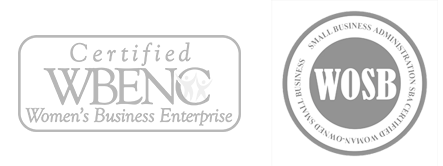THERE ARE NUMEROUS WAYS to gather leads for your sales team. Many companies try advertising, website marketing and telemarketing, for example. However, when you’re selling to other businesses, networking can be one of the most effective tools of all. Networking lets you find people you might not have met through cold calling, and it also helps you develop relationships with prospects before you make a sales call, which makes those prospects more receptive to a meeting. If it’s so effective, why does networking cause anxiety in so many people? Some people are afraid of rejection, and others don’t want to be perceived as boring or pushy. It’s useful to consider Zig Ziglar’s acronym for FEAR — False Evidence Appearing Real. We convince ourselves networking should be feared, when in reality, that fear is unfounded. If you fear networking, think about it this way: Your sole purpose is to connect with people and learn something about them. All you need is the prospect’s business card and a point of connection so that you can follow up productively.
Simply ask questions and be authentically engaged in the conversation. Let the other person remember how easy you were to talk to. Now, doesn’t that take the pressure off? You’re not there to close a sale. If you build rapport with someone, he will ask about your background — and when you ask for his card, he will likely ask for yours. It’s an understated networking strategy, which can set reluctant networkers at ease. Here are a few additional tips for getting the most from your networking activities — casting your “net” for sales success. Check out the territory. Before a networking event, ask organizers for a list of attendees. Identify prospects you want to meet beforehand by checking them out on Facebook and LinkedIn, identifying what you may have in common. Set a goal, like the specific number of prospects you want to meet. Find at least one point of connection with each person with whom you speak. Make notes about something significant your prospect said. This could include hobbies, common acquaintances or personal causes. Use these as icebreakers when you follow up. Relax. You’re not there to close a sale; your objective is simply to learn more about other people. About 95 percent of communication is non-verbal, so make sure you’re projecting confidence. Don’t cross your arms or take other defensive postures. Smiling will help you relax, and it will put the other person at ease. Focus on the other person. Learn what is important to him. Find out what keeps him up at night, and help him solve that problem. Don’t just promote your services. Show interest and enthusiasm. People love feeling interesting. Listen and ask thoughtful questions. Your goal is just to engage prospects in conversation, building rapport. The best way to start a relationship is to be helpful. Ask the prospect what his ideal client looks like, and provide a possible lead. Maybe he will do the same for you. Don’t let the trail go cold after the networking event. Stay in touch with people, even if they aren’t ideal prospects right now. You never know when you might need that connection.







